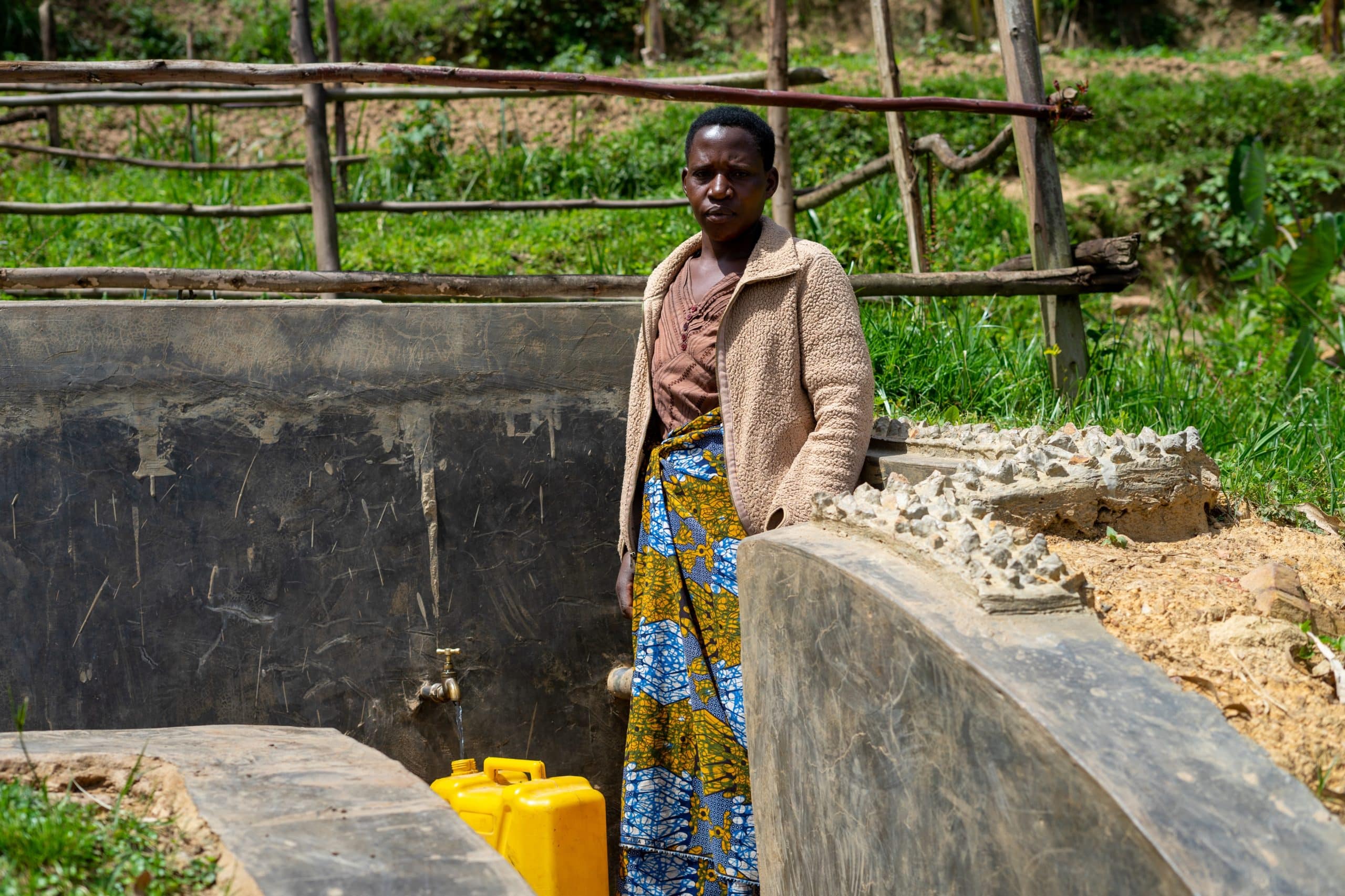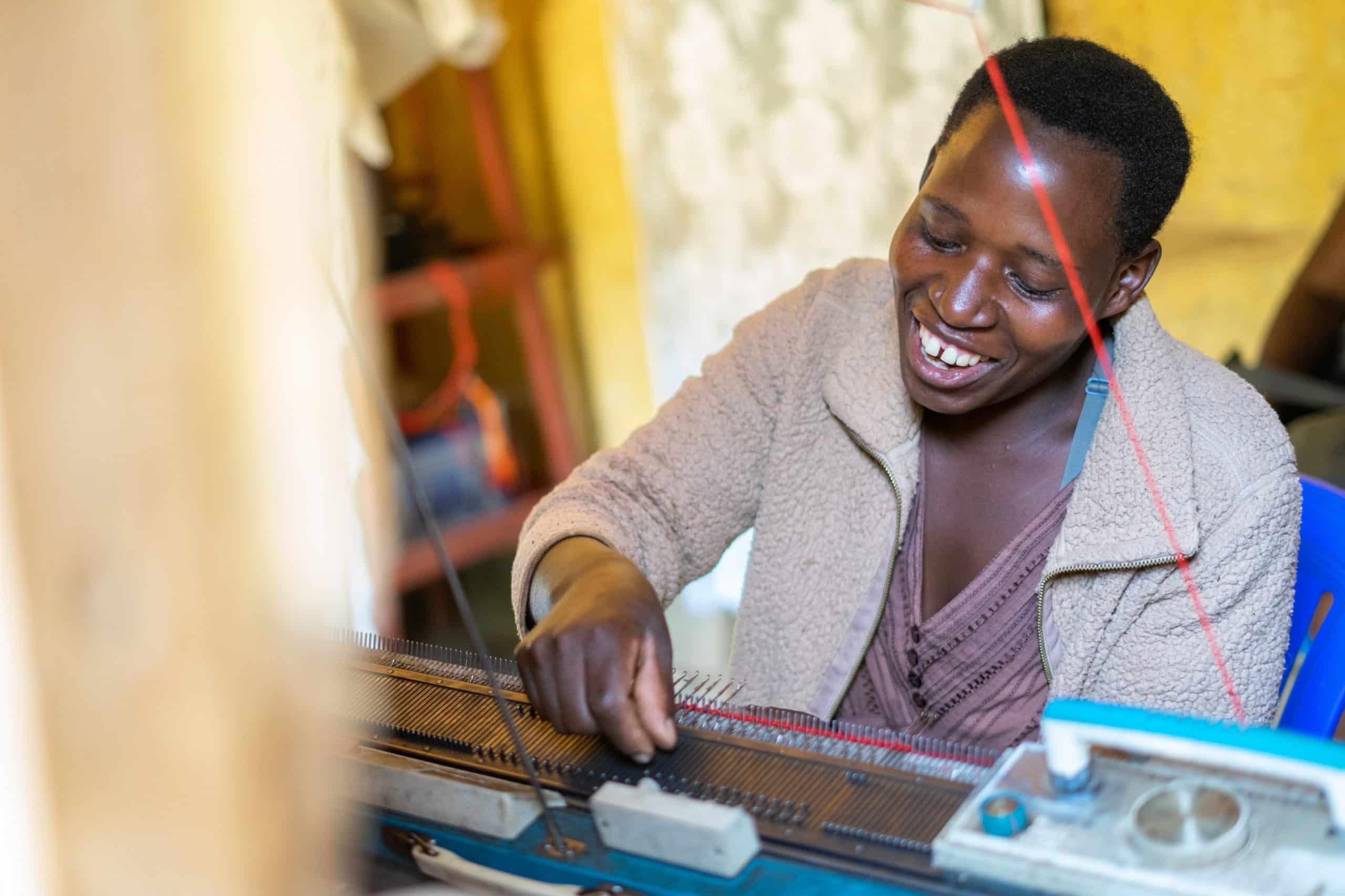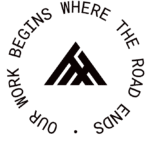Removing Barriers to Inclusive Development

For Patience, a doting mother to four children and an equal contributor to the household with her husband, fetching water was the most worrisome part of her daily routine. A typical day would involve fixing breakfast for her children, getting them to school on time and completing household chores. She also runs her own tailoring business, making school sweaters for the community’s children. And yet, the dread of fetching water loomed large on her mind compared to juggling everything else.
Before 2022, Patience’s community relied on nearby spring water as their only source. Unfortunately, the water infrastructure was inefficient, and the tap often broke down, forcing the community to draw water from a contaminated stream.
“Our tap was not dependable. So whenever it would develop a fault, we would fetch from the stream,” Patience said. “But the stream is open, children play around it, and animals like pigs wade through it. The water is often contaminated, and sometimes people get sick.”
Every day started with the question, is the tap working today? If not, it meant walking on foot to the stream, hurrying back to ensure the children reached school on time, and dealing with the additional anxiety of possible water-borne infections. An outbreak of Typhoid in her community added to her worry. The extra time spent getting water from the spring also meant lesser time for her sewing business.

In 2022, Patience’s community partnered with Raising the Village. Whereas the program’s primary objective is to increase household incomes through agriculture and small businesses, a holistic approach to poverty alleviation requires addressing development barriers and creating an enabling environment for the communities to participate. Improving health and well-being remains critical to improving livelihoods. With training on health and hygiene and access to clean water, partner communities have been able to improve health outcomes and, consequently, their incomes.
In Patience’s village, based on the community’s priority, a water shelter was built with sturdy and efficient taps, making it easier for Patience and the rest of the community to fetch water. WASH and Water User Committees were established with a leadership structure in place to ensure the operations and maintenance of the project are owned by the community for sustainability.
With the new water infrastructure, Patience’s daily routine became more efficient. She no longer had to wake up early to fetch water. She had more time to fix breakfast for her children, and they no longer arrived late for school. With fewer instances of water and non-water-borne illnesses being reported among partner households when compared to peers, Patience feels much more at peace about protecting her family from water-borne illnesses.
“Now, because the spring is near and the tap is efficient, I can get water in just 10 minutes. This gives me more time to invest in my tailoring business.” Patience said.
Be part of our journey. Support last-mile communities by supporting Raising The Village.
Let’s Stay Connected

